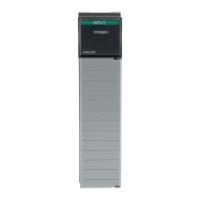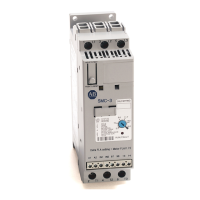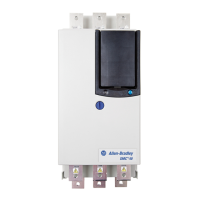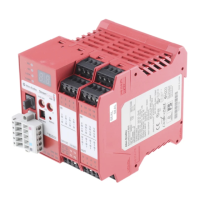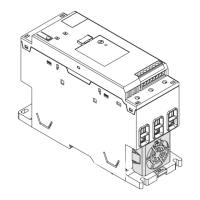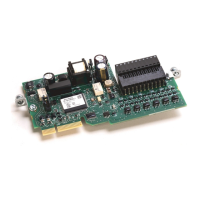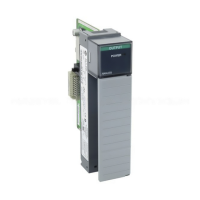Publication 1747-RM001G-EN-P - November 2008
13-86 SLC Communication Channels
Modem Control Line
Operation in SLC 5/03, SLC
5/04 and SLC 5/05
Processors
The following sections explain the operation of the SLC 5/03, SLC 5/04, and
SLC 5/05 modem control when you configure the RS232 channel for a
particular modem handshaking method.
DF1 Full-duplex
When you configure the SLC 5/03, SLC 5/04, and SLC 5/05 processors for
full-duplex DF1, the following control line operation takes effect:
No Handshaking Selected - DTR is always active and RTS is always
inactive. Receptions and transmissions take place regardless of the states of
DSR, CTS, or DCD inputs. This selection should only be made when the SLC
5/03, SLC 5/04 and SLC 5/05 processors are directly connected to another
DTE device.
Full-duplex Modem Selected - DTR and RTS are always active except at the
following times. If DSR goes inactive, both DTR and RTS are dropped for 1
to 2 seconds then reactivated. The modem lost bit (S:5/14) is turned on
immediately. While DSR is inactive, the state of DCD is ignored. Neither
receptions nor transmissions are performed.
If DCD goes inactive while DSR is active, then receptions are not allowed. If
DCD remains inactive for 9 to 10 seconds, then DTR is set inactive until DSR
goes inactive. At this point, the modem lost bit is also set. If DSR does not go
inactive, then DTR is raised again in 5 to 6 seconds.
Transmission requires all three inputs (CTS, DCD, and DSR) to be active.
Whenever DSR and DCD are both active, the modem lost bit is reset.
DF1 Half-duplex Slave
When you configure the SLC 5/03, SLC 5/04, and SLC 5/05 processors for
DF1 half-duplex slave, the following control line operation takes effect:
No Handshaking Selected - DTR is always active and RTS is always
inactive. Receptions and transmissions take place regardless of the states of
DSR, CTS, or DCD inputs. This selection should only be made when the
processor is directly connected to another DTE device.
Half-duplex Modem with Continuous Carrier Selected - DTR is always
active and RTS is only activated during transmissions (and any programmed
delays before or after transmissions). The handling of DCD and DSR are
exactly the same as with Full-duplex Modem. Transmissions require CTS and
DSR to be active.
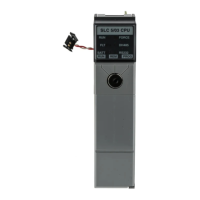
